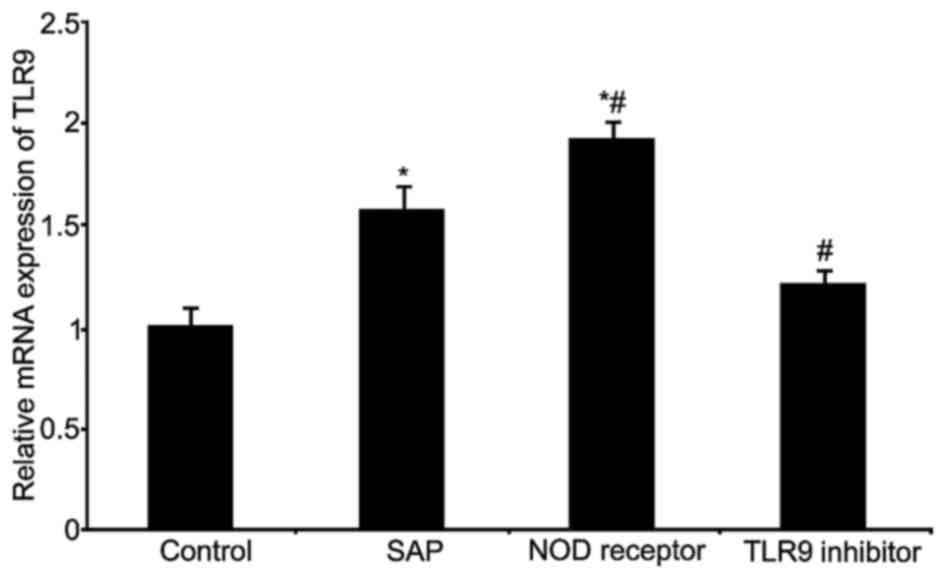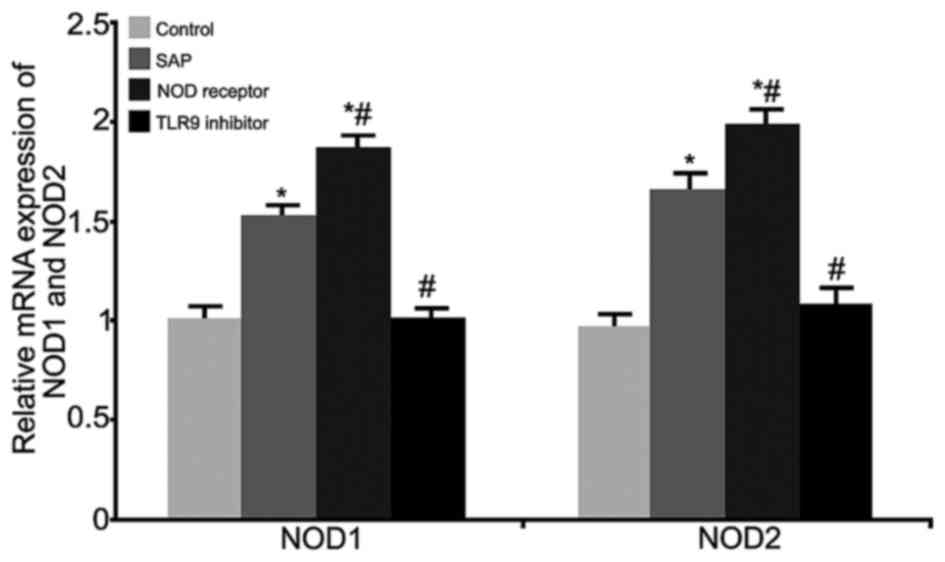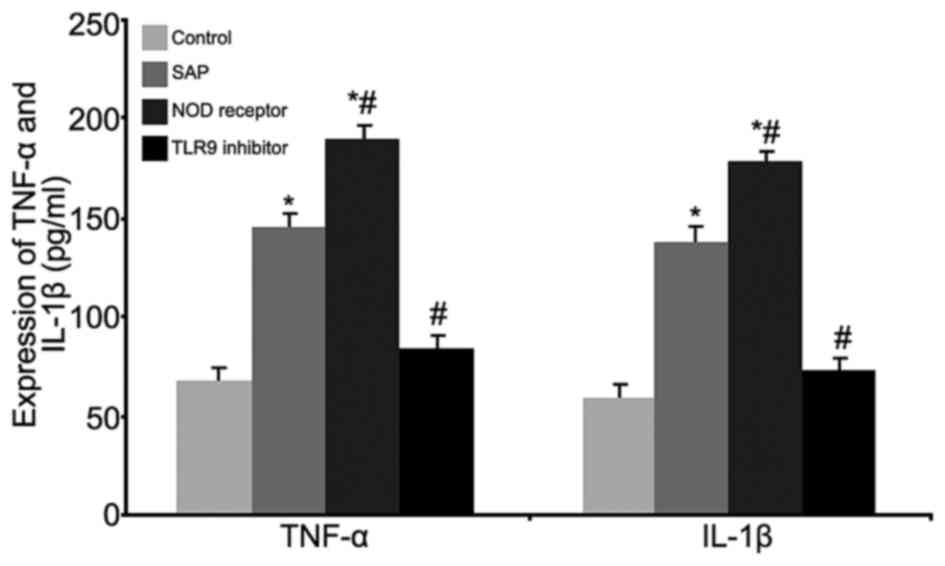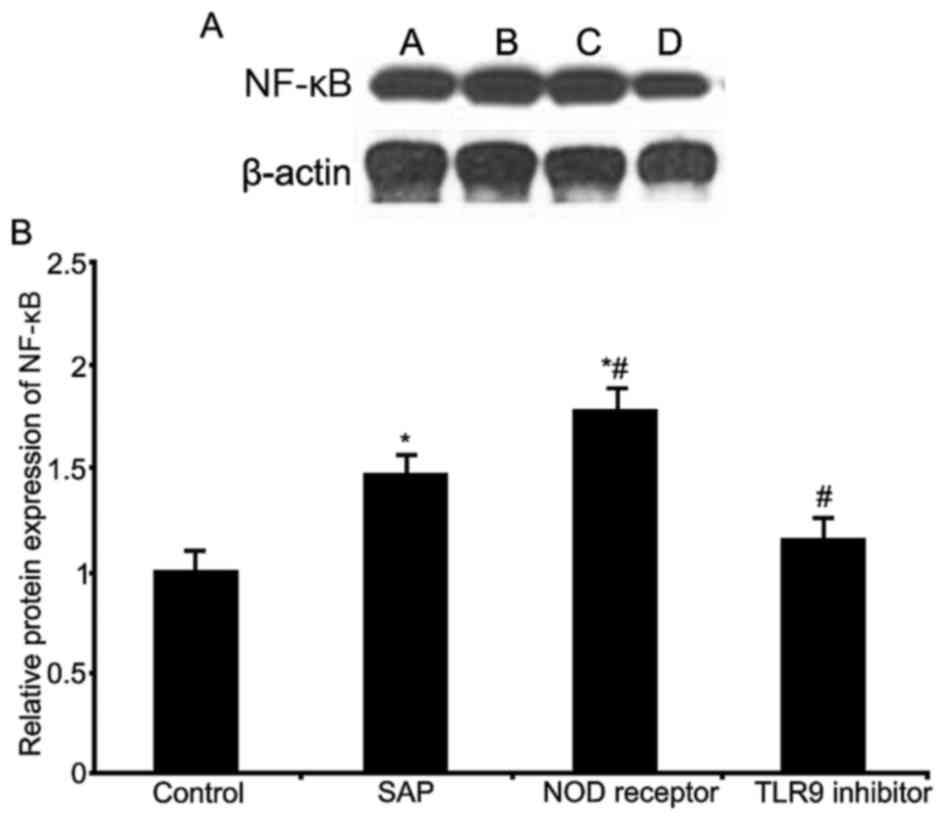|
1
|
Gooshe M, Abdolghaffari AH, Nikfar S,
Mahdaviani P and Abdollahi M: Antioxidant therapy in acute, chronic
and post-endoscopic retrograde cholangiopancreatography
pancreatitis: An updated systematic review and meta-analysis. World
J Gastroenterol. 21:9189–9208. 2015. View Article : Google Scholar : PubMed/NCBI
|
|
2
|
Jiang DL, Yang J, Jiang SY, Yuan FL, Gu
YL, Li JP and Pei ZJ: Modified Da Chengqi granules improvement in
immune function in early severe acute pancreatitis patients. Genet
Mol Res. 15:2016. View Article : Google Scholar
|
|
3
|
Zhu Y, Yin H, Zhang R, Ye X and Wei J:
Nasogastric nutrition versus nasojejunal nutrition in patients with
severe acute pancreatitis: A meta-analysis of randomized controlled
trials. Gastroenterol Res Pract. 2016:64306322016. View Article : Google Scholar : PubMed/NCBI
|
|
4
|
Herath HM and Kulatunga A: Acute
pancreatitis complicated with deep vein thrombosis and pulmonary
embolism: A case report. J Med Case Rep. 10:1822016. View Article : Google Scholar : PubMed/NCBI
|
|
5
|
Kobayashi T, Miura K, Ishikawa H, Soma D,
Zhang Z, Yuza K, Hirose Y, Takizawa K, Nagahashi M, Sakata J, et
al: Successful endoscopic management of acute necrotic pancreatitis
and walled off necrosis after auxiliary partial orthotopic
living-donor liver transplantation: A case report. Transplant Proc.
48:pp. 1212–1214. 2016; View Article : Google Scholar : PubMed/NCBI
|
|
6
|
Gorsky VA, Agapov MA, Khoreva MV and
Leonenko IV: The effect of lornoxicam on TLR2 and TLR4 messenger
RNA expression and tumor necrosis factor-α, interleukin-6 and
interleukin-8 secretion in patients with systemic complications of
acute pancreatitis. Pancreas. 44:824–830. 2015. View Article : Google Scholar : PubMed/NCBI
|
|
7
|
Matas-Cobos AM, Redondo-Cerezo E,
Alegría-Motte C, Martínez-Chamorro A, Saenz-López P, Jiménez P,
Jiménez MR, González-Calvín JL, de Teresa J and Osuna FR: The role
of Toll-like receptor polymorphisms in acute pancreatitis
occurrence and severity. Pancreas. 44:429–433. 2015.PubMed/NCBI
|
|
8
|
Takagi Y, Masamune A, Kume K, Satoh A,
Kikuta K, Watanabe T, Satoh K, Hirota M and Shimosegawa T:
Microsatellite polymorphism in intron 2 of human Toll-like receptor
2 gene is associated with susceptibility to acute pancreatitis in
Japan. Hum Immunol. 70:200–294. 2009. View Article : Google Scholar : PubMed/NCBI
|
|
9
|
Caruso R and Núñez G: Innate immunity: ER
stress recruits NOD1 and NOD2 for delivery of inflammation. Curr
Biol. 26:R508–R511. 2016. View Article : Google Scholar : PubMed/NCBI
|
|
10
|
He X, Wei Z, Wang J, Kou J, Liu W, Fu Y
and Yang Z: Alpinetin attenuates inflammatory responses by
suppressing TLR4 and NLRP3 signaling pathways in DSS-induced acute
colitis. Sci Rep. 6:283702016. View Article : Google Scholar : PubMed/NCBI
|
|
11
|
Zou Y, Lei W, He Z and Li Z: The role of
NOD1 and NOD2 in host defense against chlamydial infection. FEMS
Microbiol Lett. 363:pii: fnw1702016. View Article : Google Scholar
|
|
12
|
Paria A, Deepika A, Sreedharan K, Makesh
M, Chaudhari A, Purushothaman CS, Thirunavukkarasu AR and Rajendran
KV: Identification of Nod like receptor C3 (NLRC3) in Asian
seabass, lates calcarifer: Characterisation, ontogeny and
expression analysis after experimental infection and ligand
stimulation. Fish Shellfish Immunol. 55:602–612. 2016. View Article : Google Scholar : PubMed/NCBI
|
|
13
|
Albayrak S, Zengin K, Tanik S, Atar M,
Unal SH, Imamoglu MA and Gurdal M: Can the neutrophil-to-lymphocyte
ratio be used to predict recurrence and progression of
non-muscle-invasive bladder cancer? Kaohsiung J Med Sci.
32:327–333. 2016. View Article : Google Scholar : PubMed/NCBI
|
|
14
|
Bobbala D, Orkhis S, Kandhi R, Ramanathan
S and Ilangumaran S: Interleukin-21-dependent modulation of T cell
antigen receptor reactivity towards low affinity peptide ligands in
autoreactive CD8(+) T lymphocytes. Cytokine. 85:83–91. 2016.
View Article : Google Scholar : PubMed/NCBI
|
|
15
|
Patin EC, Jones AV, Thompson A, Clement M,
Liao CT, Griffiths JS, Wallace LE, Bryant CE, Lang R, Rosenstiel P,
et al: IL-27 induced by select candida spp. via TLR7/NOD2 signaling
and IFN-β production inhibits fungal clearance. J Immunol.
197:208–221. 2016. View Article : Google Scholar : PubMed/NCBI
|
|
16
|
Kang LL, Zhang DM, Ma CH, Zhang JH, Jia
KK, Liu JH, Wang R and Kong LD: Cinnamaldehyde and allopurinol
reduce fructose-induced cardiac inflammation and fibrosis by
attenuating CD36-mediated TLR4/6-IRAK4/1 signaling to suppress
NLRP3 inflammasome activation. Sci Rep. 6:274602016. View Article : Google Scholar : PubMed/NCBI
|
|
17
|
Livak KJ and Schmittgen TD: Analysis of
relative gene expression data using real-time quantitative PCR and
the 2(-Delta Delta C(T)) method. Methods. 25:402–408. 2001.
View Article : Google Scholar : PubMed/NCBI
|
|
18
|
Suppiah A, Malde D, Arab T, Hamed M,
Allgar V, Smith AM and Morris-Stiff G: The prognostic value of the
neutrophil-lymphocyte ratio (NLR) in acute pancreatitis:
Identification of an optimal NLR. J Gastrointest Surg. 17:675–681.
2013. View Article : Google Scholar : PubMed/NCBI
|
|
19
|
Cen Y, Liu C, Li X, Yan Z, Kuang M, Su Y,
Pan X, Qin R, Liu X, Zheng J and Zhou H: Artesunate ameliorates
severe acute pancreatitis (SAP) in rats by inhibiting expression of
pro-inflammatory cytokines and Toll-like receptor 4. Int
Immunopharmacol. 38:252–260. 2016. View Article : Google Scholar : PubMed/NCBI
|
|
20
|
Zhong K: Curcumin mediates a protective
effect via TLR-4/NF-κB signaling pathway in rat model of
severe acute pancreatitis. Cell Biochem Biophys. 73:175–180. 2015.
View Article : Google Scholar : PubMed/NCBI
|
|
21
|
Zou PF, Chang MX, Li Y, Xue NN, Li JH,
Chen SN and Nie P: NOD2 in zebrafish functions in antibacterial and
also antiviral responses via NF-κB and also MDA5, RIG-I
and MAVS. Fish Shellfish Immunol. 55:173–185. 2016. View Article : Google Scholar : PubMed/NCBI
|
|
22
|
Khare S, Radian AD, Dorfleutner A and
Stehlik C: Measuring NLR oligomerization I: Size exclusion
chromatography, co-immunoprecipitation and cross-linking. Methods
Mol Biol. 1417:131–143. 2016. View Article : Google Scholar : PubMed/NCBI
|
|
23
|
Vaz J and Andersson R: Intervention on
toll-like receptors in pancreatic cancer. World J Gastroenterol.
20:5808–5817. 2014. View Article : Google Scholar : PubMed/NCBI
|
|
24
|
Al Mofleh IA: Severe acute pancreatitis:
Pathogenetic aspects and prognostic factors. World J Gastroenterol.
14:675–684. 2008. View Article : Google Scholar : PubMed/NCBI
|
|
25
|
Jaffer U, Wade RG and Gourlay T: Cytokines
in the systemic inflammatory response syndrome: A review. HSR Proc
Intensive Care Cardiovasc Anesth. 2:pp. 161–175. 2010; PubMed/NCBI
|
|
26
|
El-Sayedel SM, Mansour AM and Nady ME:
Protective effects of pterostilbene against acetaminophen-induced
hepatotoxicity in rats. J Biochem Mol Toxicol. 29:35–42. 2015.
View Article : Google Scholar : PubMed/NCBI
|
|
27
|
Wang W, Ding XQ, Gu TT, Song L, Li JM, Xue
QC and Kong LD: Pterostilbene and allopurinol reduce
fructose-induced podocyte oxidative stress and inflammation via
microRNA-377. Free Radic Biol Med. 83:214–226. 2015. View Article : Google Scholar : PubMed/NCBI
|
|
28
|
Wang C, Sun H, Song Y, Ma Z, Zhang G, Gu X
and Zhao L: Pterostilbene attenuates inflammation in rat heart
subjected to ischemia-reperfusion: Role of TLR4/NF-κB
signaling pathway. Int J Clin Exp Med. 8:1737–1746. 2015.PubMed/NCBI
|













